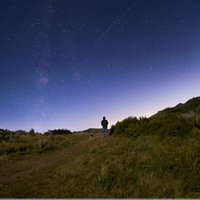
Andrea McPhee (JarvisCI)
@ms_mcphee
Math and physics at Jarvis C.I. TDSB DLL mentor. STEPUP advocate. Lifelong learner. I occasionally blog at andreamcphee.blogspot.ca . She/her/hers.
ID: 2887460597
http://mcpheesics.ca 21-11-2014 23:05:53
4,4K Tweet
395 Takipçi
310 Takip Edilen


Hey Michelle Cavarretta(Michelle Cavarretta), thank you for following me



Hey Kateřina Šmídová(Kateřina Šmídová), thank you for following me




Hey Mr. Joseph DeGennaro(Mr. Joseph DeGennaro), thank you for following me





Hey Mervi Salo(Mervi Salo), thank you for following me


Starting the day at #OAPT2023 Perimeter Institute with Katie Mack tellung us how it's all going to end. #ITeachPhysics #STEMeducation


Hey Wendy Noble(Wendy Noble), thank you for following me





![Massimo (@rainmaker1973) on Twitter photo In Northern Hemisphere we're right in the middle of winter, but Earth is actually at its closest position to the Sun #Today at 16:17 UTC and we're 5 million km closer to the Sun now than we are in early July
[read more: buff.ly/3qTubLl]
#HappyPerihelion In Northern Hemisphere we're right in the middle of winter, but Earth is actually at its closest position to the Sun #Today at 16:17 UTC and we're 5 million km closer to the Sun now than we are in early July
[read more: buff.ly/3qTubLl]
#HappyPerihelion](https://pbs.twimg.com/media/FlnM0FgXEAApbY8.jpg)
![Massimo (@rainmaker1973) on Twitter photo The Andromeda galaxy is 6 times bigger in the sky than the full Moon: it's just too dim to see with the naked eye. This composite created by Tom Buckley-Houston shows what it would look like at night if it was just brighter
[read more: ow.ly/EMek50A0CeU] The Andromeda galaxy is 6 times bigger in the sky than the full Moon: it's just too dim to see with the naked eye. This composite created by Tom Buckley-Houston shows what it would look like at night if it was just brighter
[read more: ow.ly/EMek50A0CeU]](https://pbs.twimg.com/media/Fuju209WcAAGOt6.jpg)
